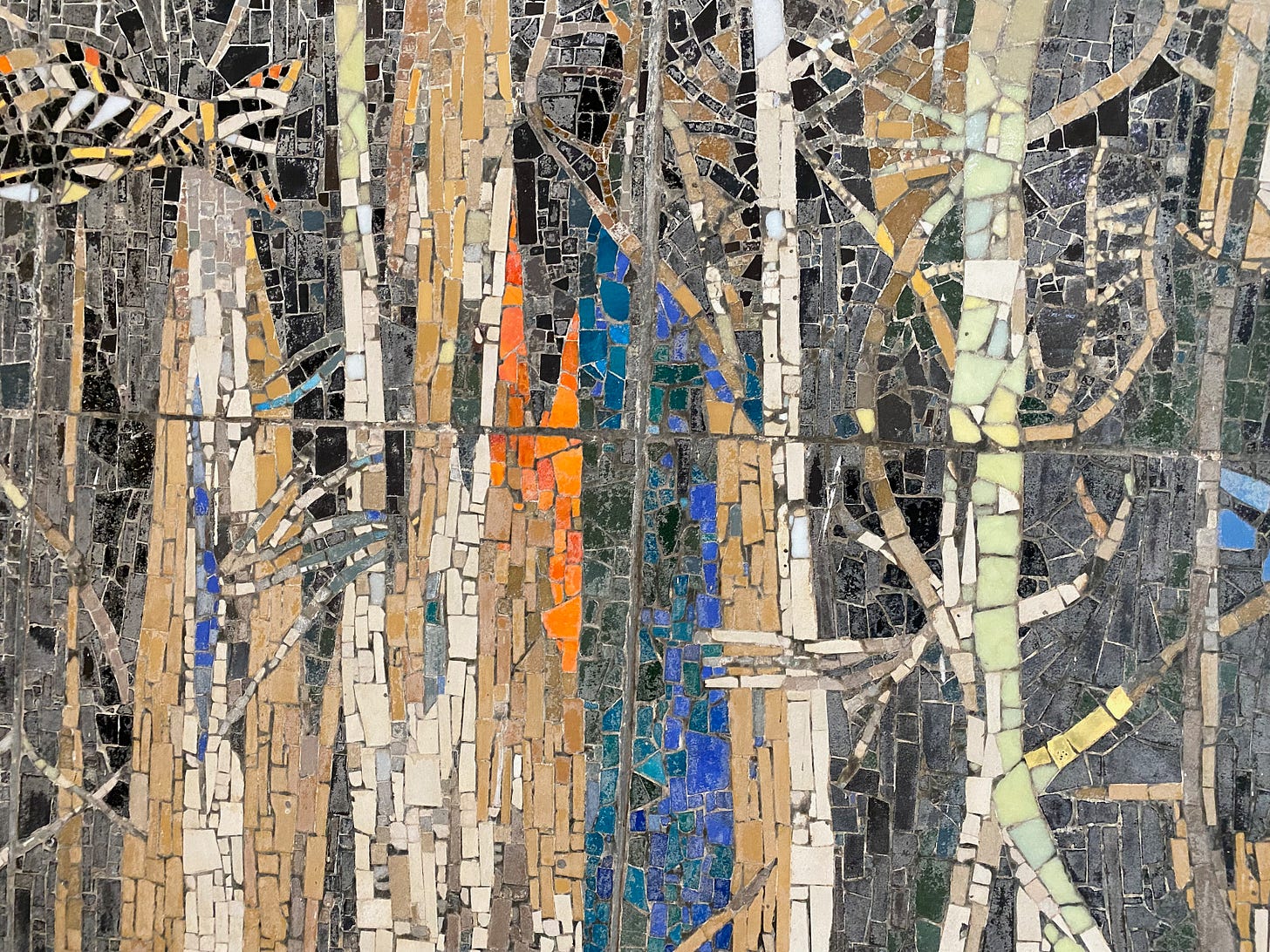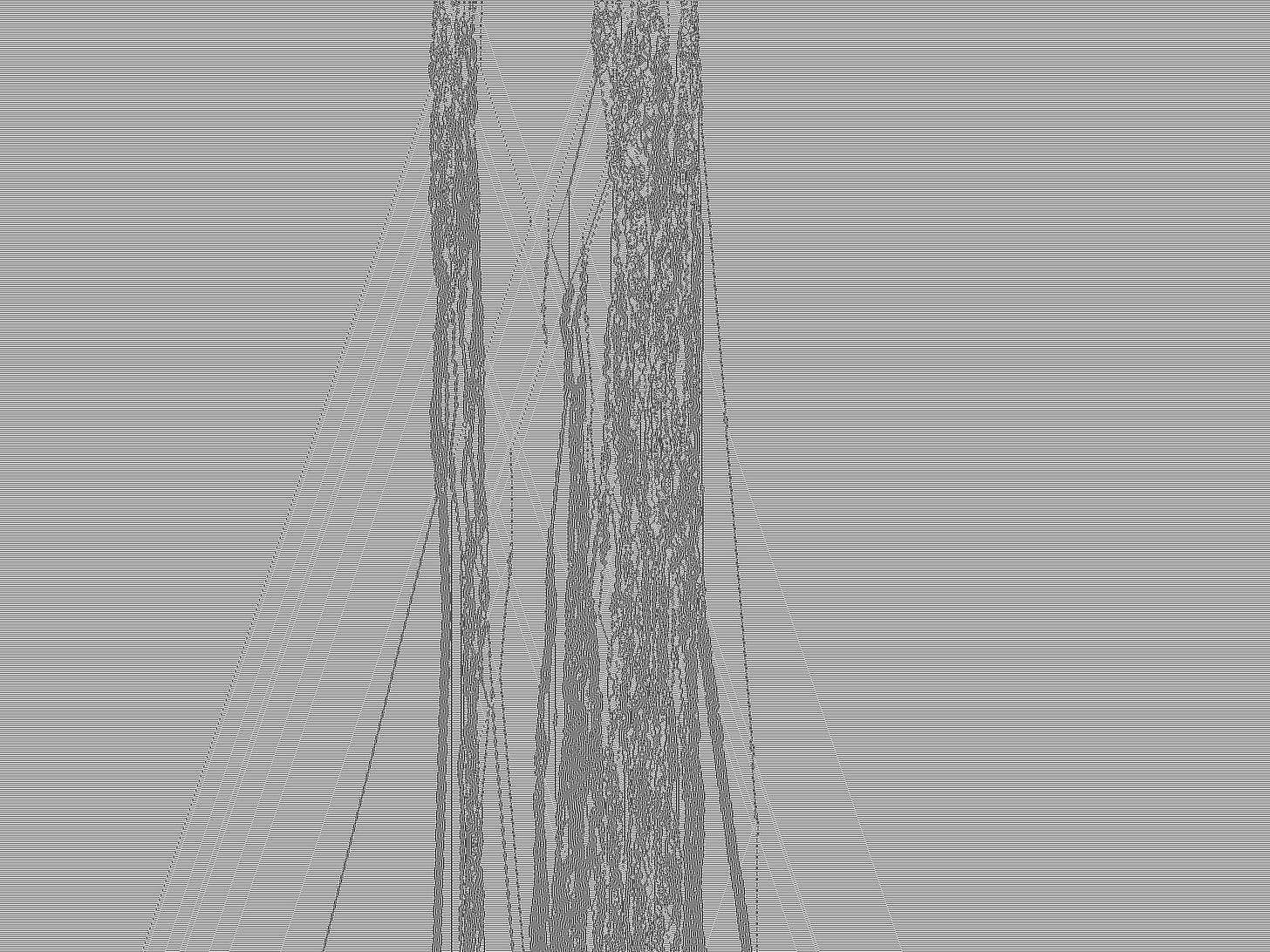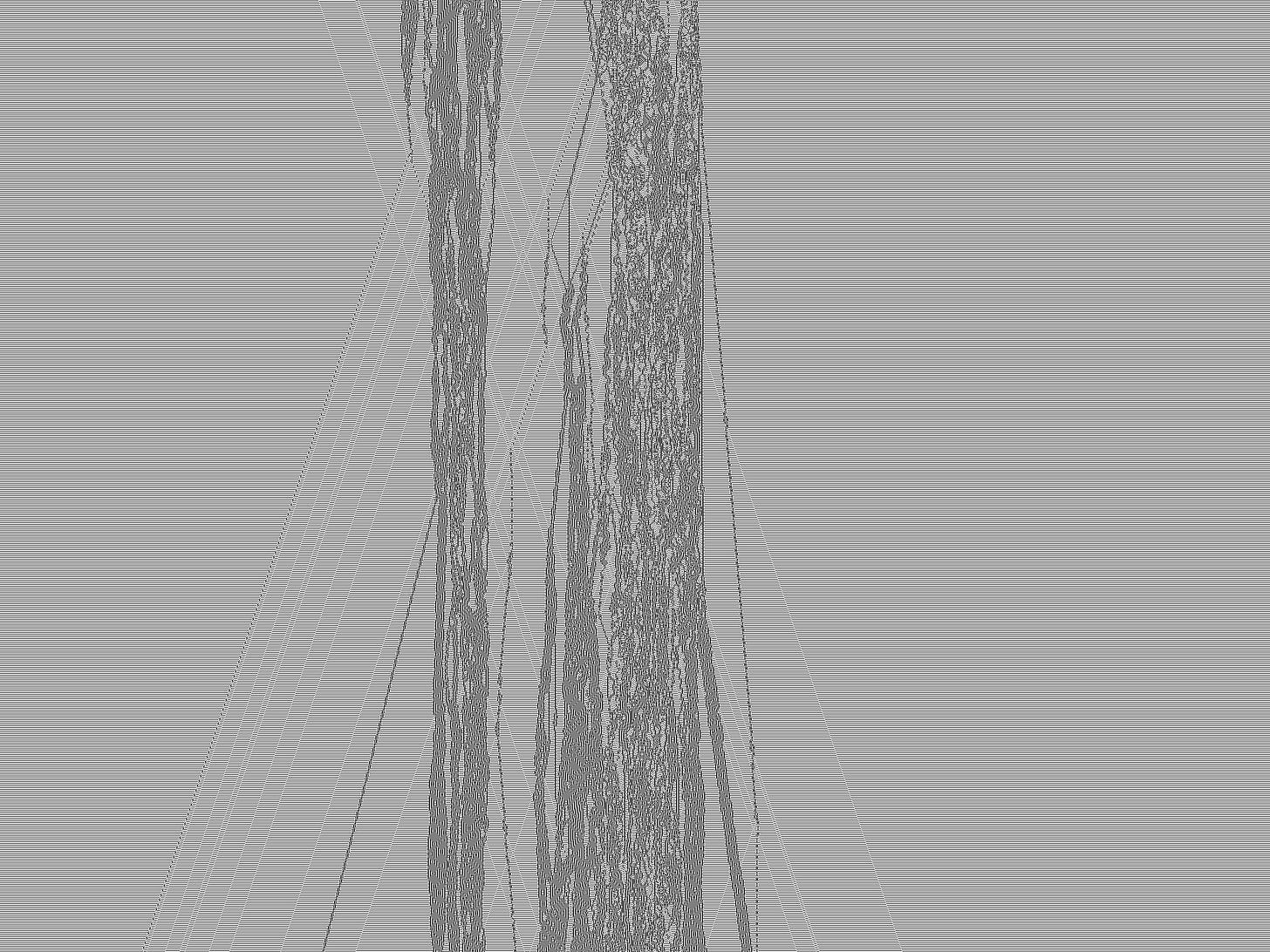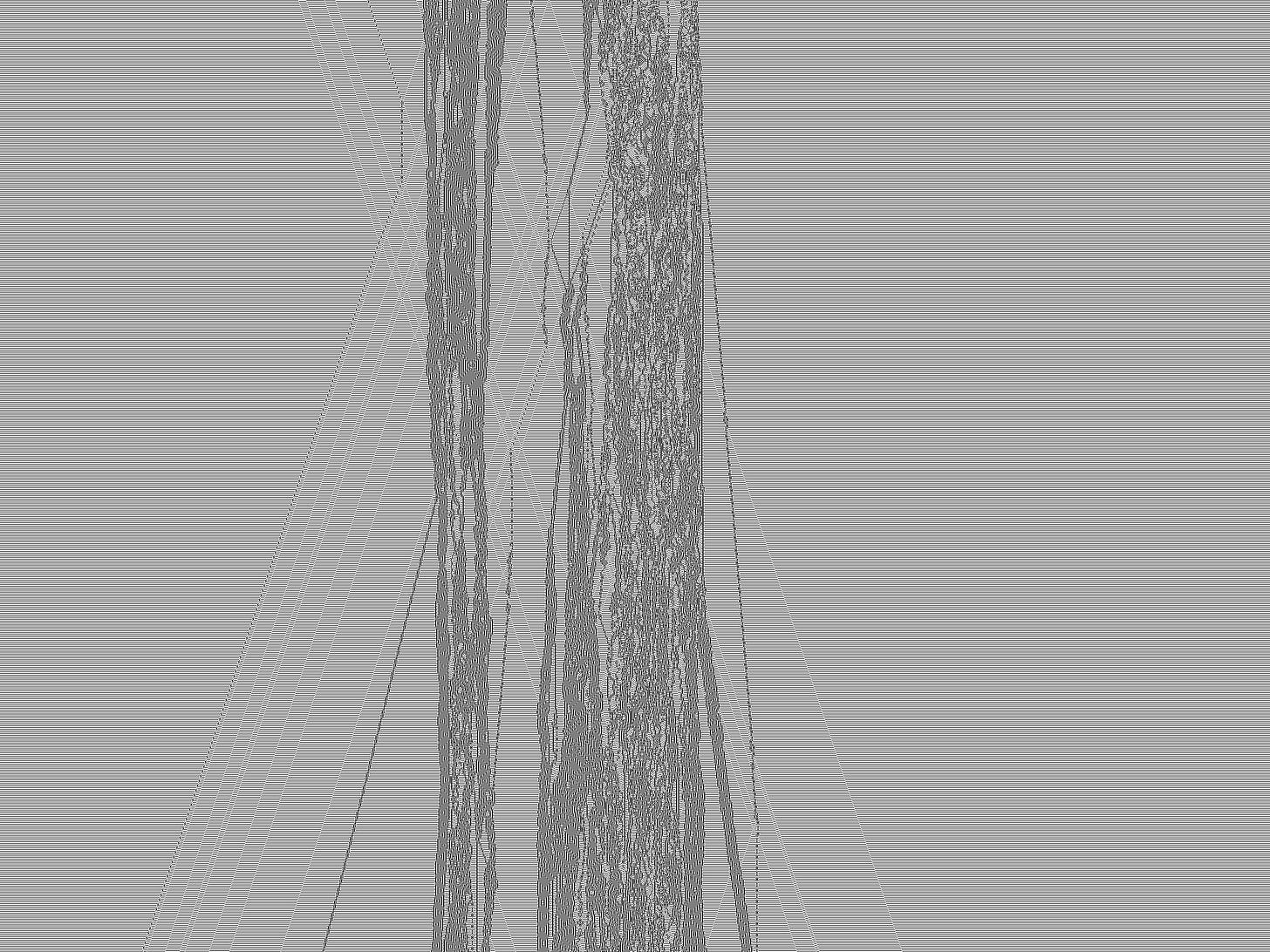Cellular automata, downward causation, and libertarian determinism
Also, a new review of my last book "Irrational mechanics."
Greetings to all readers and subscribers, and special greetings to the paid subscribers!
Please scroll down for the main topic of this newsletter. But first:
The next Terasem Colloquium on December 14, 2025 will focus on Artificial Intelligence (AI) technology. The theme: Where is AI, and where is it going? Now that Artificial General Intelligence (AGI) and even arguably conscious AI could arrive any day, we want to make a deep reconnaissance in AI territory. Stay tuned.
Cometan, the founder of Astronism and editor of the Journal of Astronist Studies, has published a review of my last book “Irrational mechanics: Narrative sketch of a futurist science & a new religion.”
The review appears in the last issue of the Journal of Astronist Studies, which also includes my review of Tsvi Bisk’s excellent book “Cosmodeism” (2024).
Click here to read Cometan’s review of my book.
Cometan praises my book but also criticizes it for “critical gaps - especially the absence of revelation, a coherent moral framework and clarity of institutional identity.”
Cometan’s criticism would be spot on if my goal were to create “a new religion.” But this is not my goal. Rather, I’m happy with my “philosophy of possibility.”
Concerning revelation, which can be “understood as divine disclosure or inner illumination,” I don’t feel the need to disguise my inner illumination as divine disclosure. Of course, I could say that I’ve been visited by an angel or enlightened alien entity who has dictated my book to me (this would be likely to spectacularly boost the sales of my book). But what for? I prefer to respect the intelligence of my readers.
Concerning my “moral minimalism,” in the last chapter I introduce the moral imperative of aligning with the will of what I call the cosmic operating system, but Cometan is right, I couldn’t care less for “dietary choices, sexual conduct, etc.”
And I think the “institutional identity” of my Turing Church is crystal clear: it is not an institution. It is not a new religion. It is not a church (the deliberately ambiguous name is borrowed from mathematics). It is not a thing, but a process.
Turing Church is, as Cometan concludes, my little personal contribution to “the unfolding narrative of humanity’s search for transcendence among the stars.”
If others want to make use of my thoughts to create religious institutions with elements like revelation, a moral framework, rituals, organization, hierarchy, etc., fine! I won’t necessarily endorse their work, but I’ll certainly find it interesting.
I look forward to discussing this further with Cometan.

In “Irrational mechanics” [Prisco 2024] I mentioned a little program that computes Wolfram’s elementary cellular automata (CA) and their reversible extensions. I used the program to experiment and create images to keep in mind when I think about free will as outlined in the book.
Wolfram’s Rule 37R [Chapter 3 of Prisco 2024] is a reversible extension of elementary CA Rule 37. Rule 37R seems complex like Rule 110, and Wolfram thinks that Rule 37R could be universal like Rule 110. Like in Rule 110, in Rule 37R there are particle-like gliders that propagate and collide, in a way that reminds of the Feynman diagrams of particle physics. This seems the simplest toy model for some aspects of the deterministic and reversible world of Laplacian determinism where information is conserved.
I’ve finally gotten around to polishing and sharing the little program. It is in the GitHub repository giulioprisco/wolframECAR.
I had previously written a Java version of this program but I decided to restart from scratch in MATLAB with artificial intelligence (AI) assistance from Grok. Grok 4 did a great job and always interpreted my prompts correctly despite possible ambiguities. Of course I checked the results against those of my previous code.
This has been my first experiment with “vibe coding” (that is, AI-assisted coding), and I'm quite pleased. I used to be good at coding but that was some time ago. But now that I have a fresh exoset of electronic neurons to assist my aging biological ones, I may well embark on new more ambitious coding projects at the intersection of mathematics and metaphysics. We’ll see.
The GitHub repository includes images that I have generated to illustrate some metaphysical musings. See the readme file.
This little program is not our universe. But according to Wolfram’s principle of computational equivalence - all sufficiently powerful computing systems are equivalent to each other in the sense that they can emulate each other - running this little program with a certain (huge) initial string of bits (cells) would eventually encode (likely in a very scrambled holographic format that mixes times and places) all that happened or will happen in our universe, including the fact that you are reading this page now.
If Rule 37R is universal and consciousness is computable, a big version of this program, starting with a certain inconceivably huge but finite string of initial bits, would eventually result in a complex universe inhabited by conscious beings.
Let’s think of those conscious beings. They are huge strings of bits (since their entire universe is a huge string of bits, they can’t be anything else). Imagine two 37R beings as huge and ultra-complex versions of the two main trunks in the images in the repository (Run 1, 3, 4). These two 37R beings interact by exchanging gliders.
Suppose the left trunk encodes me. I'm a conscious being endowed with free will. In Runs 3 and 4, I make a free choice. That is, I start my deterministic and reversible Rule 37R CA program with some initial conditions at time zero, and let the program run for a while. Then I stop the program and flip a bit in the left trunk to represent my free choice. Then I run the program in the reverse time direction until reaching time zero: the initial conditions have changed to be compatible with my free choice at a later time. Then I run the program again in the forward time direction and see how the past and the future are changed by my choice.
The effects of this choice “take time,” so to speak, to propagate toward the future and the past. The bit flip in the left trunk doesn’t affect the right trunk until a certain time difference in the past or in the future. In fact, you can see that the change in the left trunk is propagating to the right trunk only near the top and the bottom of Runs 3 and 4.
Interestingly, my choice here and now changes me but doesn't change the rest of the world at this time. Change gradually propagates toward both the future and the past.
Of course my words can only be imprecise, because human languages presuppose our usual conception of time. I could as well say that, given the bit flip, the new past has always been the real past.
If a cell is indeterminate at a certain time (e.g. cell 865 or cell 873 at time = 900), there are two possible histories (Run 1 and Run 3, or Run1 and Run 4). One of the two possible histories can be selected by a global choice beyond time (downward causation).
If all cells are indeterminate there are many possible histories. The number of possible histories grows exponentially with the number of cells. For 4 cells, the 16 possible histories are in the image 37R-4-all.png. One unique history can be selected by a set of choices distributed in time. That is, one unique history can be selected by choosing the values of some cells until all columns but one are eliminated. The choices that determine the unique history (column) can be made at different moments in time (rows).
So this little program describes a universe where the laws of physics are deterministic and reversible, but indeterminacy allows for downward causation and libertarian determinism [Prisco 2024].
This is a cellular automata version of Emily Adlam's Sudoku analogy outlined in [Prisco 2024]. It merges the toy models that I’ve called TM0 and TM1.
However, I think the cosmic operating system doesn’t choose one unique history of the universe, but keeps multiple parallel histories running. That is, the cosmic operating system doesn’t make enough choices to select a unique history. This is the toy model that I’ve called TM2.
[Prisco 2024] Irrational mechanics: Narrative sketch of a futurist science & a new religion.




